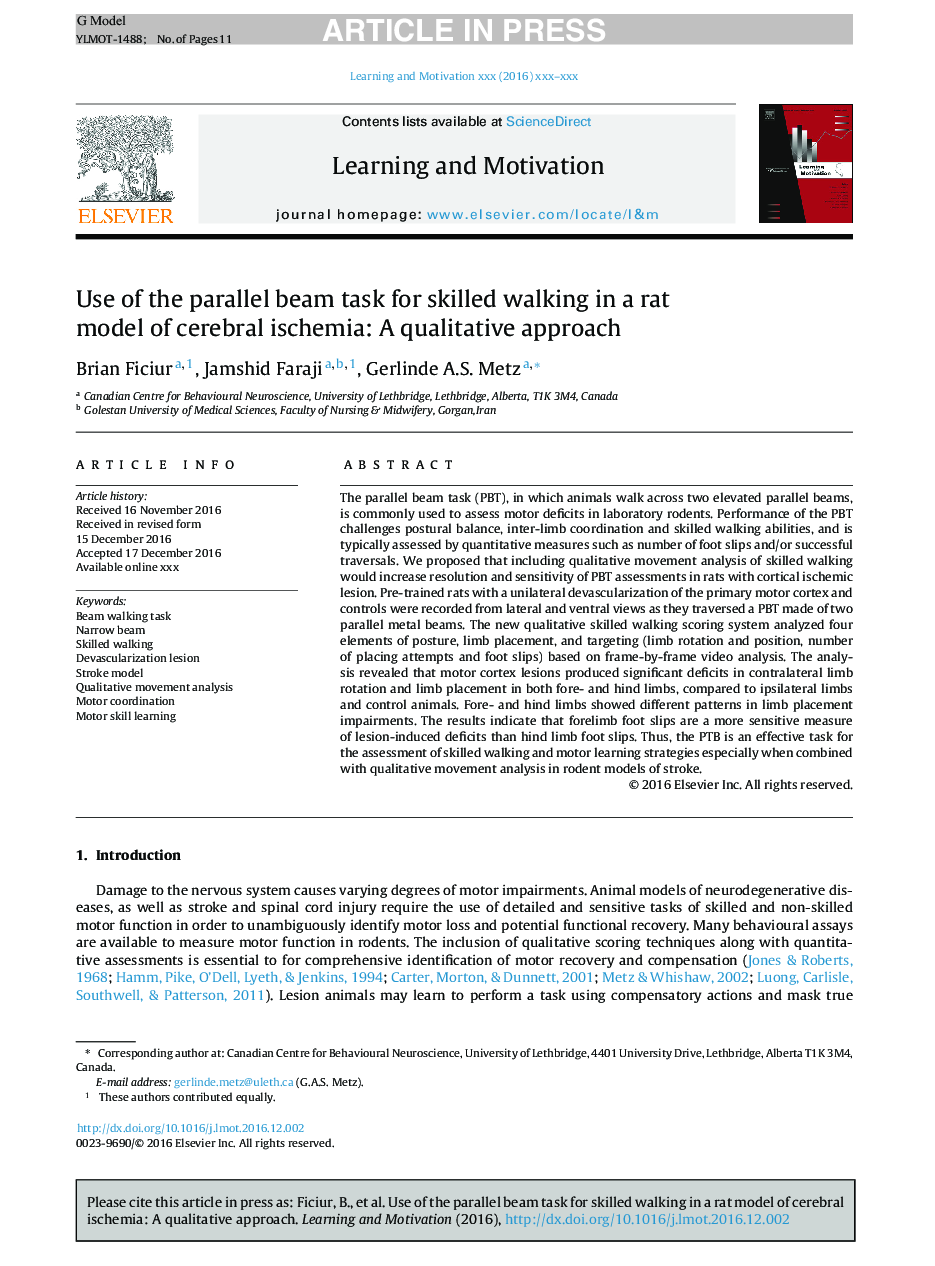| کد مقاله | کد نشریه | سال انتشار | مقاله انگلیسی | نسخه تمام متن |
|---|---|---|---|---|
| 7275871 | 1473507 | 2018 | 11 صفحه PDF | دانلود رایگان |
عنوان انگلیسی مقاله ISI
Use of the parallel beam task for skilled walking in a rat model of cerebral ischemia: A qualitative approach
ترجمه فارسی عنوان
استفاده از وظیفه پرتو موازی برای راه رفتن ماهر در یک مدل موش از ایسکمی مغزی: رویکرد کیفی
دانلود مقاله + سفارش ترجمه
دانلود مقاله ISI انگلیسی
رایگان برای ایرانیان
کلمات کلیدی
پرش راه رفتن، میله ی باریک، پیاده روی ماهر، ضایعه معده مدل سکته مغزی تجزیه و تحلیل جنبش کیفی، هماهنگی موتور، یادگیری مهارت موتور،
موضوعات مرتبط
علوم زیستی و بیوفناوری
علم عصب شناسی
علوم اعصاب رفتاری
چکیده انگلیسی
The parallel beam task (PBT), in which animals walk across two elevated parallel beams, is commonly used to assess motor deficits in laboratory rodents. Performance of the PBT challenges postural balance, inter-limb coordination and skilled walking abilities, and is typically assessed by quantitative measures such as number of foot slips and/or successful traversals. We proposed that including qualitative movement analysis of skilled walking would increase resolution and sensitivity of PBT assessments in rats with cortical ischemic lesion. Pre-trained rats with a unilateral devascularization of the primary motor cortex and controls were recorded from lateral and ventral views as they traversed a PBT made of two parallel metal beams. The new qualitative skilled walking scoring system analyzed four elements of posture, limb placement, and targeting (limb rotation and position, number of placing attempts and foot slips) based on frame-by-frame video analysis. The analysis revealed that motor cortex lesions produced significant deficits in contralateral limb rotation and limb placement in both fore- and hind limbs, compared to ipsilateral limbs and control animals. Fore- and hind limbs showed different patterns in limb placement impairments. The results indicate that forelimb foot slips are a more sensitive measure of lesion-induced deficits than hind limb foot slips. Thus, the PTB is an effective task for the assessment of skilled walking and motor learning strategies especially when combined with qualitative movement analysis in rodent models of stroke.
ناشر
Database: Elsevier - ScienceDirect (ساینس دایرکت)
Journal: Learning and Motivation - Volume 61, February 2018, Pages 74-84
Journal: Learning and Motivation - Volume 61, February 2018, Pages 74-84
نویسندگان
Brian Ficiur, Jamshid Faraji, Gerlinde A.S. Metz,
